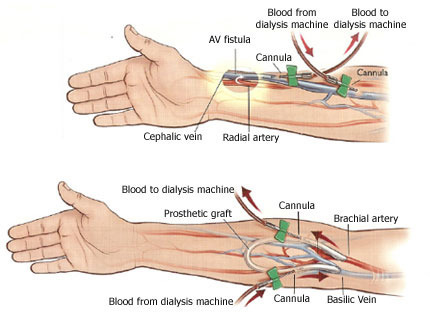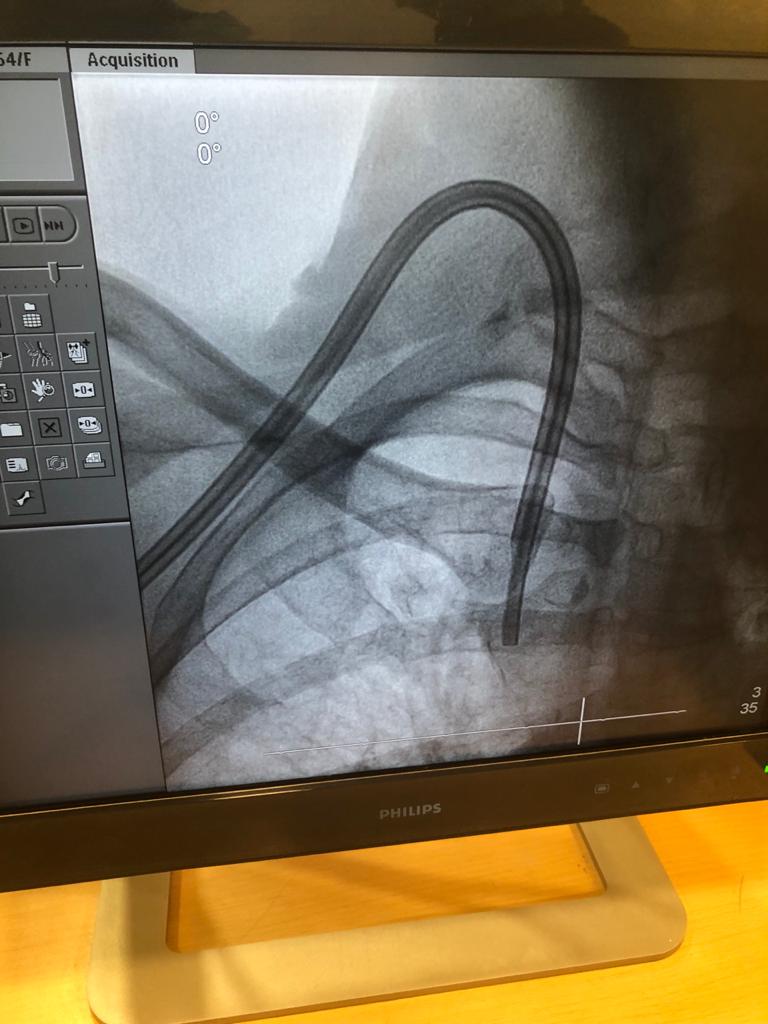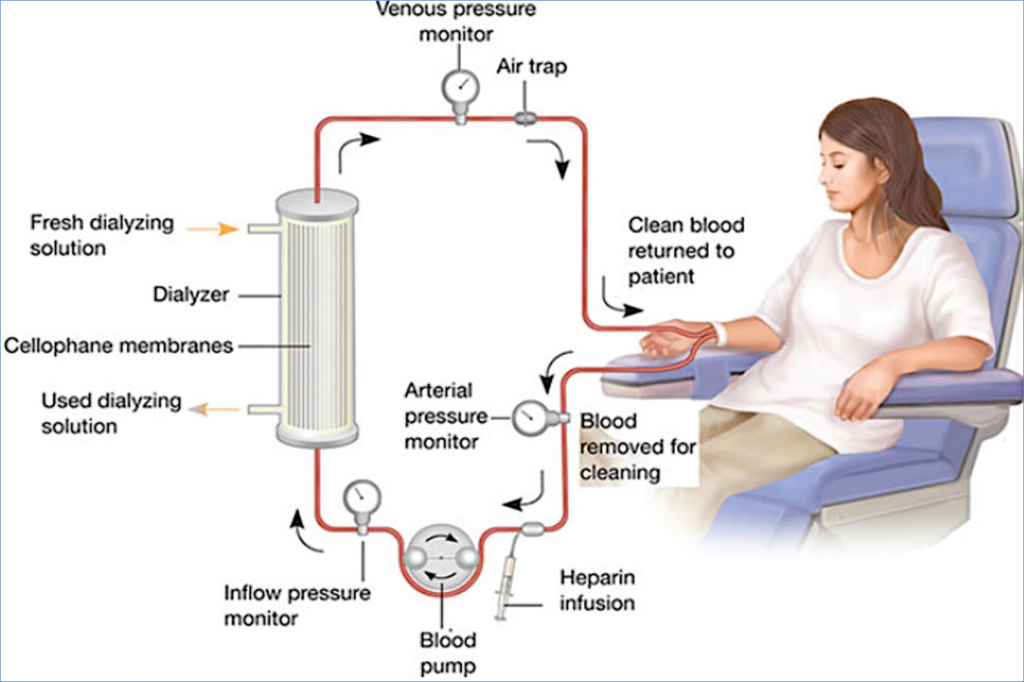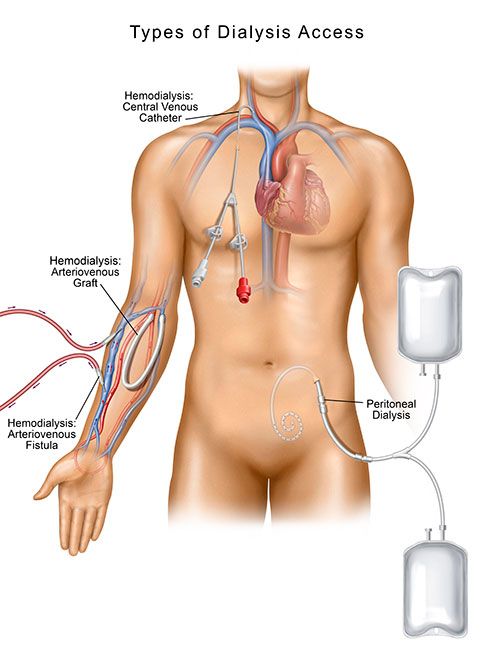You Can Take Several Steps To Protect Your Access
Our Service
COMPLEX AV ACCESS
WHAT IS AN ARTERIOVENOUS FISTULA?
An AV Fistula Requires Advance Planning Because A Fistula Takes A While After Surgery To Develop—In Rare Cases, As Long As 24 Months. But A Properly Formed Fistula Is Less Likely Than Other Kinds Of Vascular Access To Form Clots Or Become Infected. Also, Properly Formed Fistulas Tend To Last Many Years—Longer Than Any Other Kind Of Vascular Access.
A Surgeon Creates An AV Fistula By Connecting An Artery Directly To A Vein, Frequently In The Forearm. Connecting The Artery To The Vein Causes More Blood To Flow Into The Vein. As A Result, The Vein Grows Larger And Stronger, Making Repeated Needle Insertions For Hemodialysis Treatments Easier. For The Surgery, You’ll Be Given A Local Anesthetic. In Most Cases, The Procedure Can Be Performed On An Outpatient Basis.
What Is An Arteriovenous Graft?
If You Have Small Veins That Won’t Develop Properly Into A Fistula, You Can Get A Vascular Access That Connects An Artery To A Vein Using A Synthetic Tube, Or Graft, Implanted Under The Skin In Your Arm.
The Graft Becomes An Artificial Vein That Can Be Used Repeatedly For Needle Placement And Blood Access During Hemodialysis. A Graft Doesn’t Need To Develop As A Fistula Does, So It Can Be Used Sooner After Placement, Often Within 2 Or 3 Weeks.
Compared With Properly Formed Fistulas, Grafts Tend To Have More Problems With Clotting And Infection And Need Replacement Sooner. However, A Well-Cared-For Graft Can Last Several Years.


What Is A Venous Catheter For Temporary Access?
If Your Kidney Disease Has Progressed Quickly, You May Not Have Time To Get A Permanent Vascular Access Before You Start Hemodialysis Treatments. You May Need To Use A Venous Catheter As A Temporary Access.
A Catheter Is A Tube Inserted Into A Vein In Your Neck, Chest, Or Leg Near The Groin. It Has Two Chambers To Allow A Two-Way Flow Of Blood. Once A Catheter Is Placed, Needle Insertion Is Not Necessary.
Catheters Are Not Ideal For Permanent Access. They Can Clog, Become Infected, And Cause Narrowing Of The Veins In Which They Are Placed. But If You Need To Start Hemodialysis Immediately, A Catheter Will Work For Several Weeks Or Months While Your Permanent Access Develops.
For Some People, Fistula Or Graft Surgery Is Unsuccessful, And They Need To Use A Long-Term Catheter Access. Catheters That Will Be Needed For More Than About 3 Weeks Are Designed To Be Tunneled Under The Skin To Increase Comfort And Reduce Complications. Even Tunneled Catheters, However, Are Prone To Infection.
What Can I Expect During Hemodialysis?
Every Hemodialysis Session Using An AV Fistula Or AV Graft Requires Needle Insertion. Most Dialysis Centers Use Two Needles—One To Carry Blood To The Dialyzer And One To Return The Cleansed Blood To Your Body. Some Specialized Needles Are Designed With Two Openings For Two-Way Flow Of Blood, But These Needles Are Less Efficient. For Some People, Using This Needle May Mean Longer Treatments.
Some People Prefer To Insert Their Own Needles, Which Requires Training To Learn How To Prevent Infection And Protect The Vascular Access. You Can Also Learn A “Ladder” Strategy For Needle Placement In Which You “Climb” Up The Entire Length Of The Fistula, Session By Session, So You Won’t Weaken An Area With A Grouping Of Needle Sticks.
An Alternative Approach Is The “Buttonhole” Strategy In Which You Use A Limited Number Of Sites But Insert The Needle Precisely Into The Same Hole Made By The Previous Needle Stick. Whether You Insert Your Own Needles Or Not, You Should Know About These Techniques So You Can Understand And Ask Questions About Your Treatments.


What Are Some Possible Complications Of My Vascular Access?
All Three Types Of Vascular Access—AV Fistula, AV Graft, And Venous Catheter—Can Have Complications That Require Further Treatment Or Surgery. The Most Common Complications Are Access Infection And Low Blood Flow Due To Blood Clotting In The Access.
Venous Catheters Are Most Likely To Develop Infection And Clotting Problems That May Require Medication And Catheter Removal Or Replacement.
AV Grafts Can Also Develop Low Blood Flow, An Indication Of Clotting Or Narrowing Of The Access. In This Situation, The AV Graft May Require Angioplasty, A Procedure To Widen The Small Segment That Is Narrowed. Another Option Is To Perform Surgery On The AV Graft And Replace The Narrow Segment.
Infection And Low Blood Flow Are Much Less Common In Properly Formed AV Fistulas Than In AV Grafts And Venous Catheters. Still, Having An AV Fistula Is Not A Guarantee Against Complications.
How Should I Take Care Of My Vascular Access?
